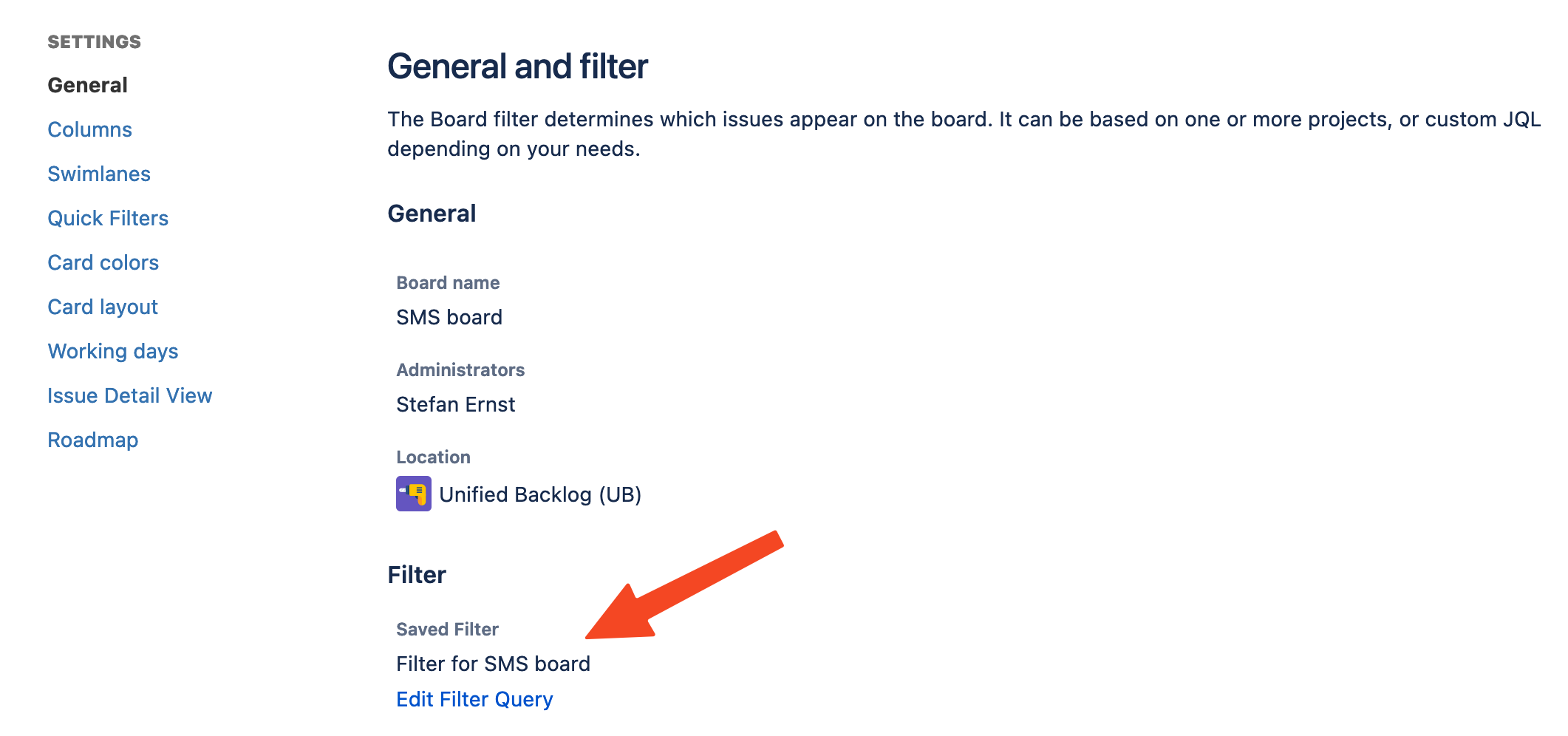Multi-project releases
As software development teams work on smaller products and product lines, the requirements for coordinated release planning grow ever stronger. In complicated situations where releases happen simultaneously or re-usable components are used across multiple projects, release dependencies can quickly become confusing without proper visualization and management. Keeping track of the relationships between releases helps stakeholders make the right project decisions, anticipate possible adverse effects, and avoid missing deadlines.
In this guide we will look at how to synchronize releases across projects with Advanced Story Maps for Jira.
Creating a user story map for multiple projects
Using a dynamic map, you can simply configure your agile board to include all projects you need. Go to your boards configuration and edit the filter query.

You can now set the board query to something like this:
project in (Project1,Project2,Project3)
The agile board should now show epics and stories from the listed projects. Read more on board filters in Atlassian's official guide.
Setting up project releases
In order to use versions across projects, Advanced Story Maps expects them to have the same name in all projects in your story map.
You can achieve this either manually by going into each projects release configuration page and creating the releases by hand, or you can use a version sync tool like this.
How Advanced Story Maps handles releases for you
Once the dynamic map is set up for multiple projects and those projects have releases with the same name, the app will unify the releases into swim-lanes. So everything assigned to "Release 1", "Release 2" etc. will be in the corresponding swim lane. You can then drag and drop issues between swim lanes and the app will dynamically look for the right release and try to assign the "fixVersion" field of the issue to the correct release id.